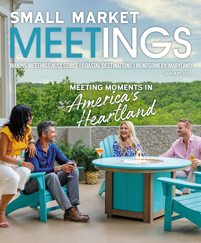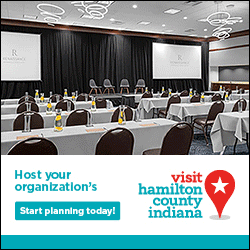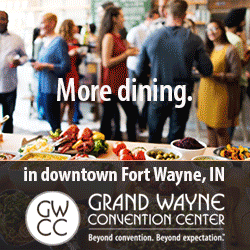Bringing spouses, children or other guests to company conferences or annual events has long been an added incentive for people to attend. But in recent years, financial considerations, an increased demand for work-life balance and a desire for higher event attendance have led more organizations to invite their attendees to bring plus-ones. This has occurred alongside the rise of “bleisure” destinations, places that have the appeal of combining work and play.
But how should planners ensure their events are sufficient to entertain everyone? Whether attendees will be bringing a single guest or their whole family, here is some insight from industry experts on planning an event that ticks both boxes in bleisure.
Choose the Locale Wisely
One of the most important factors for planning a bleisure event is the choice of destination. Common choices are beach destinations, cities near major theme parks and incentive destinations with a distinguishing culture — think California wine country or Nashville’s vibrant music scene.
But before they book, planners should research the demographics of their attendees to determine how to best cater to their plus-ones and families. If the profile of the target attendee is a professional in their 30s or 40s, it’s very plausible they have young families tagging along. However, if it’s mostly executives or professionals in their 60s, it’s a safe bet their spouses are of similar ages.
Planners should choose destinations that cater to these different demographics. A family-friendly beach community or something near a theme park is perfect for entertaining families with children, while a city with great nightlife could cater to couples traveling without children.
An option that can appeal to both groups is a resort or an all-inclusive property, which has enough amenities to entertain any demographic, from spas to abundant outdoor recreation.
“When you look at resorts that already have those activities and amenities in place, it makes planning the event right on property so much easier,” said Melissa Salem, director of group sales at Kingston Resorts in Myrtle Beach.
No matter where the meeting ends up being held, activities that showcase the destination and its signature experiences are going to be most memorable to the attendees.
“Activities are usually a direct reflection of where you’re located,” said Heather Pilcher, owner of Blue Spark Event Design. “People want to get out of the ballroom or out of the hotel room and into the culture or the attractions of the location.”
Choosing a location with a hands-on destination marketing organization (DMO) can ensure planners have help with transportation needs to off-site activities. DMOs can also provide plus-ones with suggestions of how to spend any free time.
“We, as a DMO, often provide brochures and specific information to help give planners different ideas,” said Michelle Russ, vice president of sales at Gulf Shores & Orange Beach Tourism. “We can provide a family guide and even have ambassadors that come in and speak to the families about all there is to do in the area.”
Choose Enticing Activities
While some free time can be good, especially if an event is located at a resort or leisure destination, planners should arrange a few activities as part of a spousal/family program to provide some structure and to get them out of their hotel rooms.
“You see a lot of that with a resort or beach location where they have free time built in that can be used for family time,” Russ said. “But you want to schedule something they can get excited about and look forward to. It does feel like they’re part of something, too.”
The best way to entice guests to take part in scheduled activities is to make the activities irresistible. That could include options that are unique to the destination or highly exclusive and usually unavailable to the public.
“If they’re going out West, we can do horseback riding or something Western, or if they’re in the Caribbean, we’re definitely going snorkeling,” Pilcher said. “For on-site activities, which can be a little cheaper, we’ve leaned into some more experiential activities, like building charcuterie boards.”
While having plenty of scheduled programming is important, planners should build flexibility into their spousal programs as well. Not all families’ needs are the same, and having the option to rest or enjoy downtime when it’s needed can be important. This is especially true considering most spousal or family programs are an add-on in price.
“It’s the beauty of our resort in that we offer such a wide range of options for groups and individuals that they can tailor programs to fit their needs, from beach Olympics to pickleball tournaments,” Salem said. “But we don’t really package any of that together because we like the meeting planner to have that flexibility to pick and choose what they would like to do.”
When arranging activities for spouses and families, it’s important that planners are as inclusive as possible. They shouldn’t make assumptions about gender or relationship when planning the activities.
Fifty years ago, most of the spouses accompanying attendees to a conference would have been women. Today, men and women are more equally represented in the workplace, and they bring a diverse range of guests. Offering a range of activities that cater to broad demographics ensures that guests of all genders, ages and ability levels can find something to amuse themselves.
Build Plus-Ones into the Program
Including family members in an event means attendees have fewer barriers to attending, so it’s crucial not to treat spousal or family programing like an afterthought, but rather an extension of the event itself.
“It ties back to higher attendance and overall satisfaction with the event itself,” Pilcher said. “Everybody knows events are important for your career, but it’s also hard to be away from your family for five days. If you can bring your family with, and they’re excited about it, the idea of you going again next year is probably going to be well received at your home.”
To make plus-ones feel like part of the event, surveys can be a useful tool in the planning stages. Looking at past survey data for recurring events can be helpful, but be sure to include questions in the post-event survey if there’s no data to draw on.
“As groups begin to incorporate activities for plus-ones into their programming, it’s important at the end of the event to get their feedback and see what they thought,” Salem said. “Did it work? Did these activities resonate with them?”
In addition to offering a range of activities for attendees’ guests to take advantage of separately, planners should invite them to a few social events during the main program so they feel included. Receptions or any type of social events are a great place to start.
“Here in our destination, you’ll see a lot of families and spouses attend that evening activity, especially if it’s on-site,” Russ said. “It could be a beach picnic or luau or something similar.”
Another way to make plus-ones feel welcome is to give them their own set of conference materials. That could include their own name badges at registration and a welcome packet with a list of local activities to do in their free time.
“Don’t leave them out of the marketing element,” Pilcher warned. “If you are creating agendas for the attendee who’s coming, make sure that the spousal programs, including events, lunches, dinners, anything that’s offered to them, is all in one agenda. It’s not an afterthought; it is part of the conference.”












